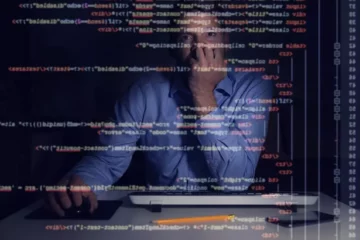Indian Economic Development Class 12 Sandeep Garg Solutions Archives
There is an imbalance between the demand and supply of human resources of various categories, especially in case of highly skilled personnel. The absence of such balancing has resulted in the wastage of resources. The continues rise in population has adversely affected the quality of human capital. The resources allocated to the formation of human capital have been much less than the resources required. Due to this reason , the facilities for the formation of human capital have remained grossly inadequate.
- These are the Human Capital Formation in India class 12 Notes Economics prepared by team of expert teachers.
- Human capital formation refers to development of abilities and skills among the population of the country.
- They are differentiated based on what they bring to the company.
- The relationship between human capital and economic growth flows in either directions.
- Thus, it can be said that with proper and conscious investment decisions, a country can turn its physical and human resources into physical and human capital respectively.
Companies cannot own this capital; they have to rent it from their employees against a proper remuneration. The sum total of the experience and abilities of the human resources in an organisation constitutes its human capital. When an individual leaves an organisation, it reduces the human capital of the organisation. Human capital can be enhanced by training and skill development and hiring.
Physical Capital vs Human Capital
Without capital, a company will not be able to produce any goods. Productivity of the organisation depends on the effectiveness of its capital. In simpler words, it portrays the cumulative value of a company’s intellectual capital. This capital is a constant source of innovation and creative solutions. This standard is used to determine the value of an individual’s skill set.
In addition to goodwill, analysts can value the impact of human capital on operations with efficiency ratios, such as return on assets (ROA) and return on equity (ROE). Thus, it can be said that with proper and conscious investment decisions, a country can turn its physical and human resources into physical and human capital respectively. For example, it can turn a land into a manufacturing outlet and a student into an engineer or doctor. Imagine you make a general human capital investment and a handful of workers subsequently leave to work for a competitor. That company now benefits from your investment in that they enjoy the worker’s increased productivity and skill while paying less for it than you did.
People migrate from one place to another in search of jobs that fetch them higher salaries.
Physical capital may be mobile, apart from certain government restrictions. It is primarily restricted by nationality and immigration and relocation laws. Human capital cannot be easily transported like physical capital as the will of an individual also becomes a deciding factor for the move. Physical capital can be separated from its owner, but human capital is inseparable. In other words, physical capital is not bound to a person while human capital is an intrinsic part of a person and cannot be separated from the individual.
In fact, handling human capital with a purely economic focus raises ethical issues many construction companies try to avoid at all costs. This completes the article on differences between human capital and human development. To read more of such interesting concepts on Economics, stay tuned to BYJU’S.
Difference between Physical Capital and Human Capital
Harvard University is not Harvard University because of its crimson logo. The value of Harvard University is in its human capital. Human capital includes the knowledge base of the employees and is often measured by the quality of the product. It also refers to the network of the employee base and the general level of influence they have on the industry. A balance sheet only lists intangible assets when they have identifiable values. Intangible assets can’t be touched, but they are often represented by a legal document or paper.
Michel Richer is the Manager of Content and Communications at Bridgit. He started in the construction industry early on with a local restoration company. Michel is driven to propel the construction industry forward by helping to eliminate outdated, ineffective processes. The construction industry has been particularly hammered by complaints of limited diversity, with the U.S. Bureau of Labor Statistics reporting that women comprise just 9% of workers in the space.
Category: Indian Economic Development Class 12 Sandeep Garg Solutions
Investment in the education system in India has been a woeful failure. The fact of the matter is that, in 1952 we were spending a meager 0.6% of our GDP on education which rose to only 4% in 2014. This has fallen well short of the 6% target as proposed by the Education Commission, in 1964.
Examples of intangible assets include intellectual property such as brands, patents, customer lists, licensing agreements, and goodwill. When one company acquires or purchases another, and the https://1investing.in/ purchase price is more than the physical assets it purchases, it creates goodwill. The difference is recorded as goodwill, and one of the largest components of goodwill is human capital.
• Such training has the advantage that it can be provided fast and without much cost. (a) Migration takes place when people move distinguish between human capital and physical capital class 12 to new places in search of opportunities, which involves a high cost. Investment in education, health, clean environment, etc.
Discuss the educational achievements in India.
The Indian education pyramid is steep, indicating a lesser and lesser number of people reaching the higher education level. It states that the world is undergoing rapid changes in the knowledge landscape. Both of these capitals go through depreciation, but the reasons are not the same.
Given the challenges of controlling general human capital investments in construction, some companies minimize them. Problems relating to development of education in India (i) Large number of illiterates. Importance and objectives of education (i) Education produces good citizens. (ii) Education facilitates use of resources in the country. It has been observed that educated persons have families as compared to illiterate families.






